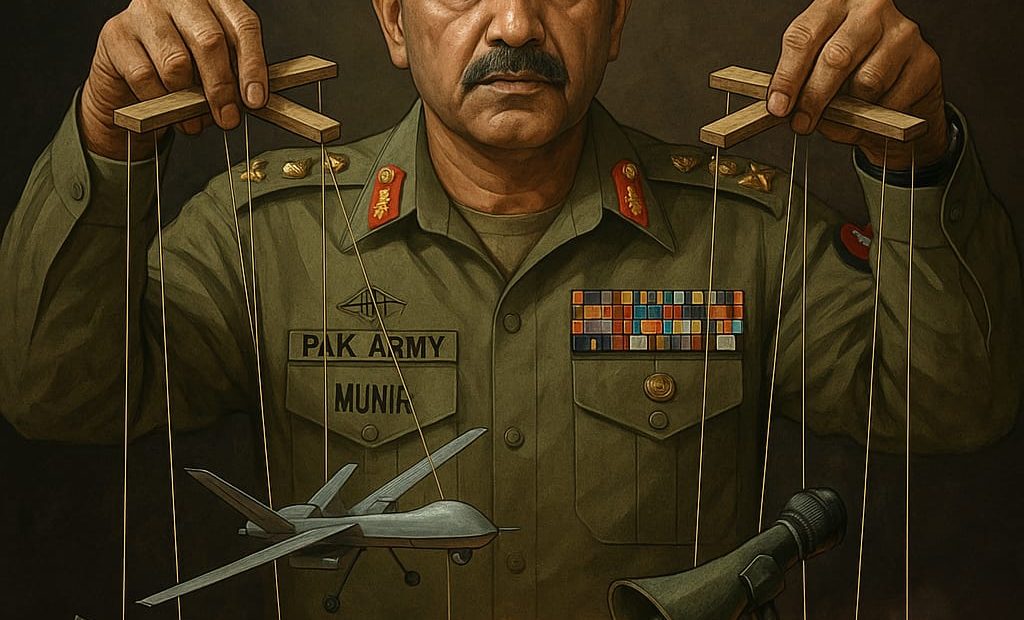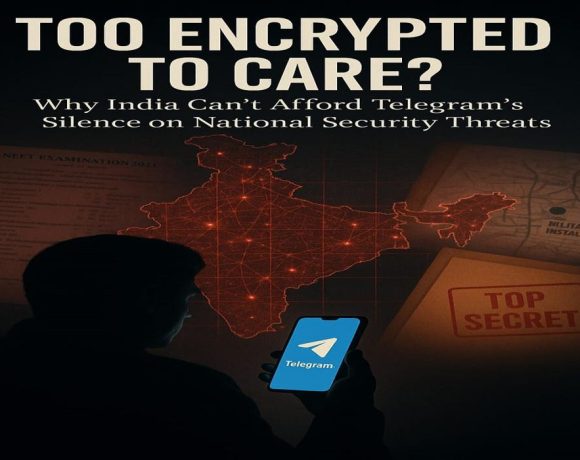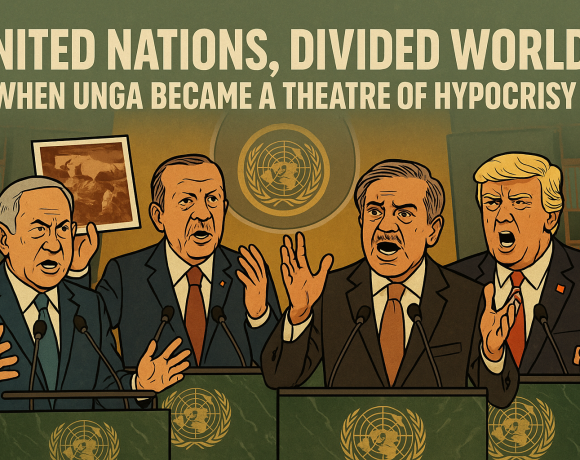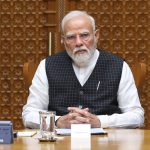
Munir’s Last Card: Ceasefire as Theatre, Conflict as Strategy
Over the past several days, the Line of Control has turned into a flickering war zone. From RS Pura to Akhnoor, and from Neelum to Bhimber, intermittent firing, shelling, and drone sightings have dominated headlines. But beneath this chaos lies a disturbing possibility: that this war isn’t a product of unpredictability or tactical miscalculation, but a choreographed drama, scripted by Pakistan’s Chief of Army Staff, General Asim Munir. In the subcontinent, ceasefires are not merely agreements—they are political signals. And when those signals start blinking erratically, it’s worth asking: who benefits from the confusion?
Ceasefire Violations as Deliberate Instruments
Ceasefire violations have long been a tool in Pakistan’s hybrid warfare playbook. From the Kargil conflict to Uri and Pulwama, Pakistan has mastered the art of using low-intensity flare-ups to provoke responses, infiltrate terrorists, and distract domestic populations. The current wave of hostilities follows a well-worn script: create skirmishes, issue denials, and weaponize the narrative. What makes this moment different is the regularity of pauses and restarts. These aren’t escalations spinning out of control—they are deliberately calibrated pulses of aggression.
The General in Need of a War
General Asim Munir lacks what his predecessors like Musharraf had: a battlefield legacy. A product of military intelligence rather than combat command, Munir’s rise was administrative, not heroic. He inherited a divided army, a crumbling civilian government, and a powerful political adversary in Imran Khan. With no unifying military victory or political legitimacy, Munir seems to be gambling on an old formula: use war to write your legacy. If Musharraf had Kargil, Munir is scripting his own crisis—just smart enough to provoke, just restrained enough to deny.
The Sermon Before the Strike
In the weeks leading up to the Pahalgam terror attack, General Munir’s appearances at religious gatherings raised eyebrows. At a congregation in Rawalpindi, Munir reportedly spoke about the “divine duty” of resistance and positioned the struggle as one between “the faithful” and “the aggressors.” The subtext was unmistakable: the army wasn’t just a national force—it was a religious vanguard. These speeches, cloaked in piety but dripping with politics, acted as ideological groundwork for the escalation that followed. Like Zia before him, Munir was invoking religion to legitimize retaliation and pre-empt criticism.
Manufactured Escalation, Manufactured Glory
Pakistan’s military-media complex has swung into full gear. Every drone launch, every intercepted missile, every blackout is spun into a nationalistic spectacle. From ‘unprovoked Indian aggression’ to ‘civilian casualties,’ the story being sold is one of martyrdom and muscular resistance. The ISPR (Inter-Services Public Relations) is no longer just a communication wing—it is the stage director of this carefully curated war narrative. The goal is clear: elevate the military, marginalize dissent, and sideline both civilian government and political opposition.
Internal Pressures, External Diversions
The unrest following Imran Khan’s arrest in 2023 fractured the army’s image of unity. Corps commanders distanced themselves, and murmurs of disobedience surfaced. Munir has since cracked down, but the scars remain. Shehbaz Sharif’s government offers no real civilian check—its legitimacy is wafer-thin and its authority outsourced to Rawalpindi. Faced with internal fragility, Munir’s external aggression is not strategy—it is survival theatre.
What India Must Do: Precision Over Provocation
India must resist the trap of full-scale escalation. Munir may be hoping for exactly that—a symmetrical war that justifies martial consolidation in Pakistan. Instead, India should pursue targeted military responses, maintain narrative superiority, and expose Pakistan’s duplicity in international forums. Tactical responses, surgical strikes, drone-based deterrence, and relentless information warfare will achieve more than conventional military escalation. India must remember: sometimes, the best way to win a war is to not let your enemy choose the battlefield.
Conclusion: Theatrics with Fallout
General Munir’s war is not about Kashmir or ceasefires. It’s about control. Control of narrative, control of the army, and most importantly, control of Pakistan itself. But history is unforgiving to generals who gamble too much, too fast. As shown by Zia’s excesses and Musharraf’s downfall, military theatrics often end in civil backlash or international isolation.
As per Statscope India Research, such cycles of manufactured crises have historically preceded attempts at power centralization within the Pakistan Army. Speaking on behalf of the think tank, Darshan Walawalkar, Partner at Statscope, notes:
“Whether it was Ayub Khan staging Operation Gibraltar, Zia-ul-Haq using Islamization to suppress dissent, or Musharraf gambling on Kargil to strengthen his grip—Pakistani generals have a habit of staging wars to secure power. Munir seems to be following the same doctrine with new technology, but old ambition.”
India must read the script, but refuse to act in it. Let Munir direct his drama—New Delhi has better things to do than play a role in his delusions of grandeur.


















